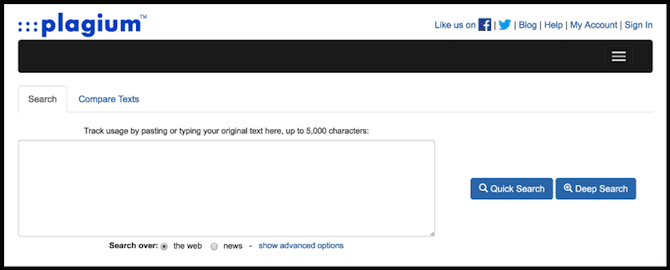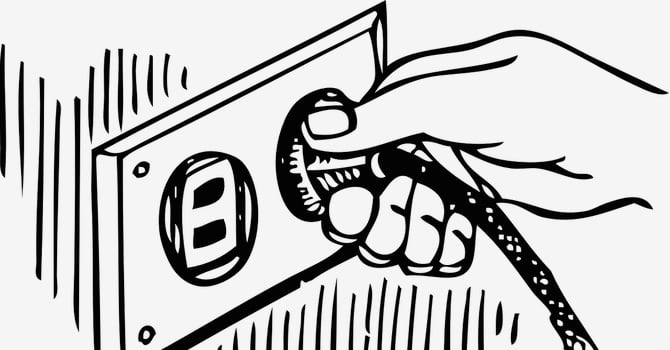Copying, scraping, plagiarism, stealing, content jacking – whatever you call it, it’s an epidemic. As a blogger and writer, you care about your content. You work hard to create it and make it as valuable as possible before you publish it. Then someone else comes along, takes the entire piece and republishes it as their own work on their own site. Sometimes, search engines will even rank the stolen piece above your own, truly adding insult to injury!
There often is a thin line between inspiration and plagiarism. Plagiarism impacts bloggers in two separate ways: When their own content is stolen; and when they receive plagiarized content from unscrupulous freelance writers or guest bloggers who are trying to pass the stolen content off as their own work.
Table of Contents
Why Is Plagiarism and Content Theft an Issue?
 Source: Pexels / Pixabay.com
Source: Pexels / Pixabay.com
When your content is stolen, you can get hit with a duplicate content penalty from search engines. You can also suffer a loss of authority and reputation. And that’s to say nothing of the fact that it’s intellectual property theft and hence unlawful. Knowledge-based brands in today’s economy depend on ownership rights to their own content, and that means ownership of your words.
It’s also a problem in the second scenario. When you publish plagiarized content, you lose credibility. Also, even if it’s totally innocent on your part, you published that content and thus you might be legally on the hook. So it’s important to be aware of the plagiarism issue. You can protect yourself with good systems and the right plagiarism checker tools. In this article we’ll cover how to go about addressing this issue if it happens to you.
How to Detect Plagiarism of Your Blog Posts
To detect duplicate content, it’s best to use more than one plagiarism checker tool. Especially popular blog posts often get reblogged on shady sites without permission. This of course is a clear copyright violation and you could take action against these sites. Create Google alerts for your name and your brand/blog. This should catch folks who scrape content and bylines without authorization, attribution or links.

Likewise, periodically conduct Google searches of your headlines, with your post in one window and the search in another window, side by side on your screen so you can easily refer back and forth. This is important because often the plagiarized copy is reworded ever so slightly to avoid detection by text-based copy tools. You can also use Copyscape tools for this purpose; the site will allow you to compare the content on two pages side-by-side for free.
Online Plagiarism Checker Tools to Detect Content Theft
 Source: wiggijo / Pixabay.com
Source: wiggijo / Pixabay.comIn addition to Google tools, you can choose plagiarism detection web-based tools. Most offer both free and premium or credit-based plans and a la carte services. Free online plagiarism checker tools often are sufficient for most amateur bloggers. If you’re professional blogger and make money from your blog, you can always upgrade to a premium plan for more advanced features. In either way, these tools are great for content copy protection.
Plagiarism Checker

This free plagiarism checker by EduBirdie will ensure that your essay or document is 100% plagiarism free. All you have to do is enter your text in the required boxes and click on the “check my essay” button. There are a title box and the main body section too. If you wish, you can upload a document too in one of the following file formats – .pdf, .doc, .txt, .rtf, .odt and .docx.
The checker processes your text unbelievably fast. In less than 30 seconds the plagiarism results are displayed. You can see the overall uniqueness percentage together with the sources that are copied. Next, to each source, you can see the link and the percentage of text that is supposedly plagiarized. Finally, your text that is shown as copied is highlighted red – this makes it really simple to make changes and alter the plagiarized parts. Everything about this checker is user-friendly!
Copyscape

Copyscape is one of the most well-known plagiarism detectors. It also offers premium features, such as the ability to evaluate articles you’re about to buy to make sure they’re original. Copyscape as popular plagiarism checker tool also offers automated website audit and protection services through its Copysentry program.
DMCA Scan

Free registration at DMCA Scan gets you a few features, such as one free DMCA takedown action per year and a 10% discount off all other takedown services. The site’s premium plan offers additional benefits which could be worth the expense for large websites with the budget to afford a little extra peace of mind.
Dupli Checker

Dupli Checker is free to use, but registration is required if you want to do more than one search per day. You can check either by copying and pasting up to 1,000 words, or by uploading DOC or TXT file. The Dupli Checker tool is a quick and efficient way to check your content for any signs that may indicate content theft or duplicate content.
Plagium

Plagium is another plagiarism checker. It allows you to copy and paste up to 5,000 characters for a search, or copy and paste two texts to compare them. Access these tools for more than occasional use by signing up for an account and purchasing search credits. Accounts also give you access to deeper levels of search and the ability to upload files.
Aresearchguide plagiarism checker

When developing Aresearchguide free online plagiarism checker, the developers actually realized what people look for in a plagiarism checker. While the main function of this tool is to check the originality of the text, this tool has an advantage over most other detectors: it is a detector with a percentage.
But this is not the only reason why AResearchGuide is regarded as the best free plagiarism checker. It is well-known among its users, mostly for its accuracy of results. If you have already tried other free tools, you will instantly realize the superiority of the AResearchGuide plagiarism checker.
It has an intuitive user interface that allows you to check your text with ease. You do not need to spend time on registration. What you have to do is to paste your text, click “CHECK FOR PLAGIARISM” and see the results.
You can rely on the results because they are always accurate. The results appear almost instantly-in just a few seconds. This tool will save your time and money. Once you start using it, you will not look for paid plagiarism detectors.
Protecting Yourself From Accidental Plagiarism

There are a few things you can do to protect yourself and your blog from the negative impact of accidental plagiarism. Which approach you take, depends on the type of plagiarism you’re concerned about. A proper workflow is key to preventing accidental plagiarism on your WordPress blog or website.
First, learn how to properly cite other people’s work. The web is built on links, so of course you can refer to other people’s work without the author’s permission, as long as the use is reasonable and properly attributed. Attribution doesn’t need to be as methodical and precise as for college term papers. Just use a reasonable quote with attribution, then link to the original source.
Remember that simply rewording someone else’s sentence with synonyms doesn’t make it not-plagiarized. Either come up with your own ideas, or attribute and cite a proper quote. If you accept guest posts or outsource to freelancers, create a system that includes a plagiarism check. You’ll also want to make sure you include a clause in which the author affirms that they have sole copyright in the content they’re providing in your guest post guidelines and freelancer contracts. By following a few simple best practices you can easily prevent plagiarism on your blog.
WordPress Plugins to Protect Your Content From Being Copied
 Source: Clker-Free-Vector-Images / Pixabay.com
Source: Clker-Free-Vector-Images / Pixabay.comYou may ask yourself how you can protect your own WordPress blog against content theft. In addition to the online plagiarism checker and duplicate content checker tools that have been mentioned above, there are a couple of WordPress plugins you can use. While there is no 100% protection against content theft, these WordPress plugins make it at least more difficult for the regular user to steal your content.
WP Content Copy Protection & No Right Click
The WP Content Copy Protection plugin uses various techniques (JavaScript + CSS) to protect your content from being copied by other authors. For example you can prevent text from being selected and copied, disable right clicks or context menus, prevent images from being downloaded / saved and more.
There also is a Pro version of this content protection plugin for WordPress available. The Pro version includes additional content protection features like watermarking, using htaccess rules, support for jQuery overlay protection, aggressive image protection and much more. Overall, this is a feature rich plugin to prevent content theft.
CopyProof Website
Unfortunately it’s a common practice that some people copy text and re-use this content on their own sites. CopyProof Website claims to make it tough for ordinary content thieves to copy text from your site. While this plugin protects your site agains content theft, the content still is available for search engines.
The CopyProof Website plugin prevents text drag & drop, image drag & drop, image download with right clicks and much more. In addition this plugin reduces the quality of screenshots that can be taken from your website and it’s AdSense friendly as well. CopyProof Website also doesn’t have any negative effect on the speed of your website.
What to Do When Your Content Has Been Copied

When you discover that your content has been copied, the first task is to document the offending content. It’s best to take screenshots that show the URL, the date (if published) and the byline, if any. Do the same for your own piece. Next, identify the site owner and the site’s hosting company with a Whois Lookup. Then contact the site owner and ask them to take the content down. A few guidelines to follow for this initial contact:
- Always maintain a cordial but professional tone throughout the correspondence.
- Provide all necessary information: dates, URLs, headlines, authorship and claimed authorship for your piece and the plagiarized piece.
- State that it’s your original work and you never gave them permission to reprint it on their site.
- Tell them to take your copied content down by a specific date.
- Tell them how you will escalate this if it’s not done by that date.

Create a reminder in your calendar for that date, then check the offending site. If it’s down, great. If not, it’s time to escalate. First, write to search engines and the hosting company for the site. In the US, you can do this with a DMCA takedown notice. Many of the companies you’d be writing to here may also have their own forms or processes they want you to follow. Therefore, double-check each site you’re contacting for that information first. In addition, you can find more information and the general DMCA requirements at the following links:
- “DMCA Takedown 101” guide from Brainz.org
- Removing Content From Google
- Section 512 of the DMCA
- Sample DMCA Takedown Notice from IPWatchdog.com
Of course, if you or the companies you’re contacting are located in other countries, other laws will apply. If a web search doesn’t help, you could contact a practicing attorney in that jurisdiction.
Conclusion: Use Plagiarism Checker Tools to Fight Content Theft
You worked hard to create your valuable blog content, so it’s worth your time and energy to protect it. The best way to do this is to create simple, workable systems to protect yourself. Then follow those systems anytime you publish new content. Periodically check for duplicate pieces on the web, especially when you achieve any traction or go viral with individual posts. Have you ever had a blog post scraped or copied? How did you handle it, and what was the outcome? Share your best tips to get rid of plagiarism and stolen content in the comments section below.
image sources
- Paper on Desk: Pexels / Pixabay.com
- Telescope View: wiggijo / Pixabay.com
- Pull the Plug: Clker-Free-Vector-Images / Pixabay.com





